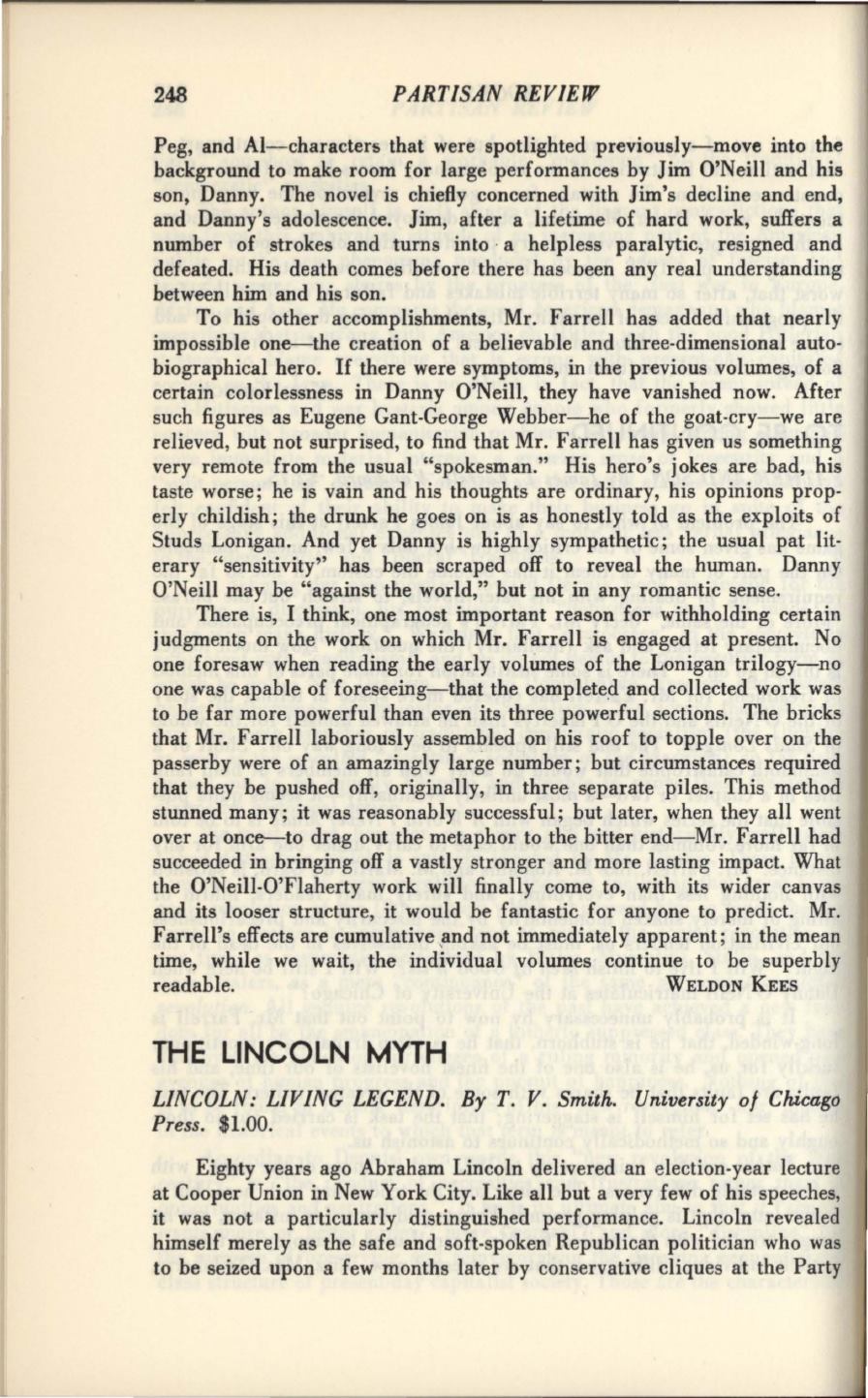
248
PARTISAN REVIEW
Peg, and Al-characters that were spotlighted previously-move into the
background to make room for large performances by Jim O'Neill and his
son, Danny. The novel is chiefly concerned with Jim's decline and end,
and Danny's adolescence. Jim, after a lifetime of hard work, suffers a
number of strokes and turns into · a helpless paralytic, resigned and
defeated. His death comes before there has been any real understanding
between him and his son.
To his other accomplishments, Mr. Farrell has added that nearly
impossible one-the creation of a believable and three-dimensional auto–
biographical hero.
If
there were symptoms, in the previous volumes, of a
certain colorlessness in Danny O'Neill, they have vanished now. After
such figures as Eugene Gant-George Webber-he of the goat-cry-we are
relieved, but not surprised, to find that Mr. Farrell has given us something
very remote from the usual "spokesman." His hero's jokes are had, his
taste worse; he is vain and his thoughts are ordinary, his opinions prop–
erly childish; the drunk he goes on is as honestly told as the exploits of
Studs Lonigan. And yet Danny is highly sympathetic; the usual pat lit–
erary "sensitivity'' has been scraped off to reveal the human. Danny
O'Neill may be "against the world," but not in any romantic sense.
There is, I think, one most important reason for withholding certain
judgments on the work on which Mr. Farrell is engaged at present. No
one foresaw when reading the early volillnes of the Lonigan trilogy-no
one was capable of foreseeing-that the completed and collected work was
to be far more powerful than even its three powerful sections. The bricks
that Mr. Farrell laboriously assembled on his roof to topple over on the
passerby were of an amazingly large number; hut circumstances required
that they he pushed off, originally, in three separate piles. This method
stunned many; it was reasonably successful; hut later, when they all went
over at once-to drag out the metaphor to the hitter end-Mr. Farrell had
succeeded in bringing off a vastly stronger and more lasting impact. What
the O'Neill-O'Flaherty work will finally come to, with its wider canvas
and its looser structure, it would be fantastic for anyone to predict. Mr.
Farrell's effects are cumulative ,and not immediately apparent; in the mean
time, while we wait, the individual volumes continue to be superbly
readable.
WELDON KEES
THE LINCOLN MYTH
LINCOLN: LIVING LEGEND. By T. V. Smith. University of Chicago
Press.
$1.00.
Eighty years ago Abraham Lincoln delivered an election-year lecture
at Cooper Union in New York City. Like all hut a very few of his speeches,
it was not a particularly distinguished performance. Lincoln revealed
himself merely as the safe and soft-spoken Republican politician who was
to he seized upon a few months later by conservative cliques at the Party


